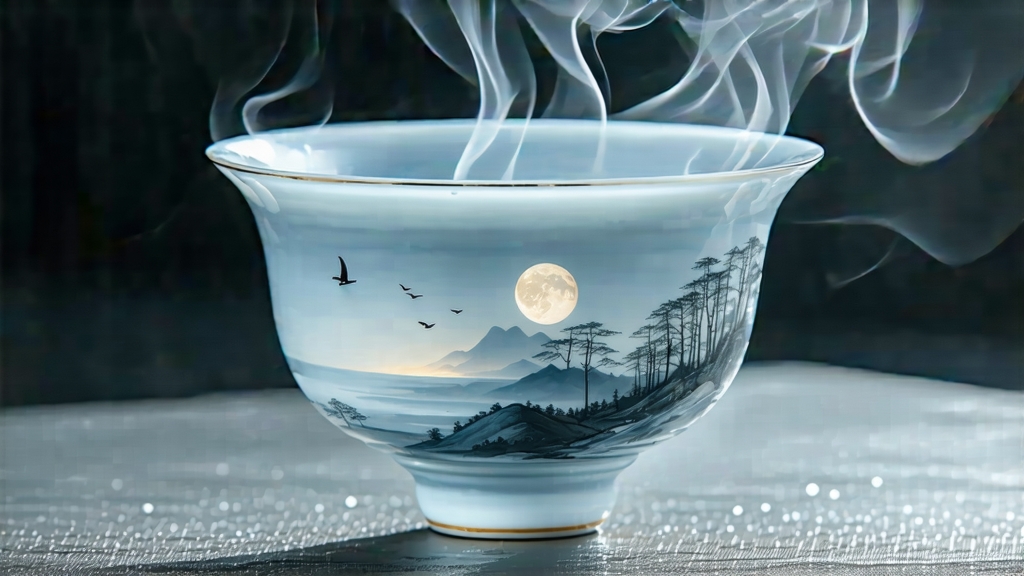
Among the six great families of Chinese tea, white tea is the least theatrical yet the most elusive; it is the quiet scholar who arrives at the banquet in undyed silk and ends up owning the conversation. Within that scholar’s scroll-case, Bai Hao Yin Zhen—“Silver Needle,” or more poetically “White Down Silver Needle”—is the single sentence everybody quotes without ever fully exhausting its meaning. If you have never tasted it, imagine the smell of the first winter sunrise on fresh hay, the taste of a pear drop dissolved in mountain spring water, and the tactile memory of stroking a baby’s cheek; if you have tasted it, you already know that words are only shadows.
Historical whispers
The first verifiable record appears in the Song-era “Treatise on Tea” (1107) where Emperor Huizong praises a tea “covered in down, like frost on a plum petal.” Whether that tea was exactly Yin Zhen is debated, but by the late Ming (early 1600s) the counties of Fuding and Zhenghe in Fujian were already selecting only the unopened bud to make tribute cakes pressed with phoenix motifs. When the Qing court switched to loose leaf, the bud remained, gaining its present name. Export documents from 1856 show Silver Needle reaching Hamburg via the Thirteen Hongs of Canton; European physicians prescribed it for “heated blood and restless dreams,” inadvertently launching the myth of white tea as a medicinal elixir. In 1972 it was served to President Nixon in the Great Hall of the People, and in 2008 the opening banquet for Olympic dignitaries ended with Yin Zhen served from glass pitchers back-lit by amber LEDs, a quiet flex of cultural confidence.
Micro-terroir: two counties, two personalities
Authentic Yin Zhen comes only from Fujian, and only from two protected geographical indications: Fuding and Zhenghe. Fuding sits closer to the East China Sea; its reddish granite soils are laced with quartz, and the maritime air gives the bud a jasmine-laced lift. Zhenghe lies inland at slightly higher altitude; yellowish loess and cooler nights translate into a deeper, quince-like sweetness. Purists will stage blind tastings the way Burgundy lovers compare Chambolle-Musigny versus Gevrey-Chambertin; the difference is that subtle, and that decisive.
The plant itself must be the small-leaf Da Bai cultivar (Camellia sinensis var. sinensis cv. Da Bai Hao). In early March, when five consecutive days hold steady between 12 °C and 18 °C, the bushes enter what locals call “the jade window”: the bud grows to 2.5–3 cm yet refuses to open, storing the maximum amount of L-theanine and downy trichomes. One kilogram of finished tea demands roughly thirty thousand buds, all picked before eight in the morning while the dew is still a natural refrigerant. Experienced pluckers use a silent “twist-lift” motion that avoids the fingernail’s oxidizing pressure; the bud is dropped into a shallow bamboo creel lined with banana leaf so that no part bruises under its own weight.
Crafting nothing into everything
White tea’s processing is famously minimal—no pan-firing, no rolling, no shaking—yet that very absence magnifies every micro-decision. The classic four-step sequence is:
-
Withering: buds are laid 2 cm thick on bamboo trays set in a sun-dappled courtyard. For the first two hours they are turned every twenty minutes so that each side receives the same photonic kiss. When the moisture drops from 75 % to about 45 %, trays are moved onto racks inside a cave-like room where the only heat source is the respiration of the tea itself. Over the next 36–48 h the ambient temperature is kept below 28 °C; any hotter and the enzymes rush, flattening aroma. Masters gauge progress by ear: a bud that crackles like thin ice when rolled between the palms is ready.
-
Shade-fixation: trays rest in total darkness for four hours. This step, unique to Yin Zhen, halts oxidative browning while locking in a silvery visual brightness that connoisseurs call “moonlight gloss.”
-
Baking: charcoal made from local lychee wood is stacked into a snake-shaped pit. A double-layered bamboo screen